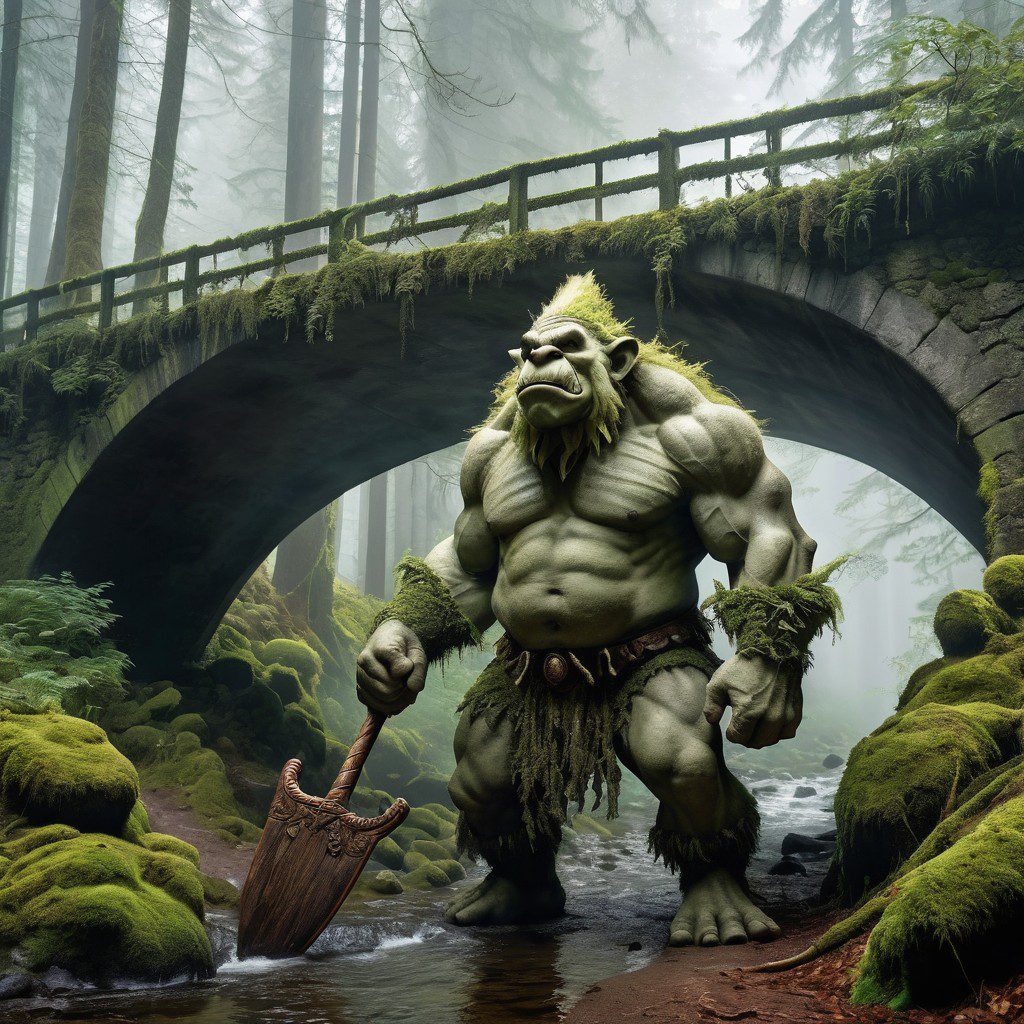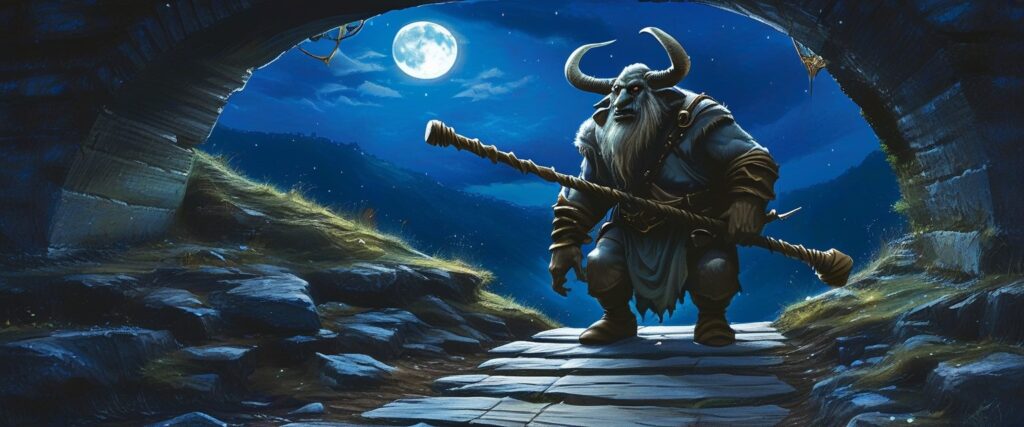Trolls: The Giants of Myth, Folklore, and Fantasy

Trolls are one of the most iconic and fearsome creatures in folklore and fantasy, often depicted as large, brutish beings with a hunger for destruction and chaos. Originating from Norse and Scandinavian mythology, trolls have evolved over the centuries into various forms, ranging from cunning and malevolent giants to dim-witted, slow-moving monsters. Their depictions vary widely depending on the source, but they are almost always portrayed as creatures of immense size and strength, with a natural affinity for darkness and isolation.
In modern fantasy literature, video games, and movies, trolls remain a staple—serving as either formidable enemies or tragic, misunderstood creatures. Let’s explore the origins of trolls, their portrayal in mythology, and their role in contemporary media.
Origins and Mythological Background
Trolls have their roots in Norse and Scandinavian mythology, where they were often depicted as beings that inhabited remote places like mountains, caves, and forests. In Old Norse, the word troll could refer to various supernatural beings, ranging from powerful, nature-based spirits to evil giants. Trolls were often seen as embodiments of the wild, untamed natural world, existing outside of human civilization and frequently opposing the gods or humans.
Norse Mythology
In Norse mythology, trolls were often connected with the Jotunn, or giants, who lived in Jotunheim, a realm outside of Asgard and Midgard. These beings were frequently in conflict with the gods, especially Thor, who was known for slaying giants and trolls with his mighty hammer, Mjolnir. Trolls in Norse myth were typically massive, physically powerful, and often malevolent toward humans. They were described as slow-witted but extremely dangerous, especially when provoked.
Scandinavian Folklore

In Scandinavian folklore, trolls were often portrayed as beings that lived in the wilderness, far from human settlements. They were frequently linked to nature, sometimes depicted as protectors of forests and mountains but more often as dangerous, malevolent creatures that preyed on humans or livestock. Trolls were said to turn to stone if exposed to sunlight, which made them nocturnal beings, avoiding daylight at all costs.
Some folklore also portrays trolls as more comical or foolish, easily tricked by clever humans, but still dangerous due to their size and strength. For example, in Norwegian folktales, trolls are sometimes described as slow and stupid, often outwitted by heroes like Askeladden, the Ash Lad, who defeats them through trickery rather than brute force.
Characteristics of Trolls
Trolls are known for their immense size and monstrous appearance, though their specific traits can vary widely between cultures and depictions. In general, they share a few common characteristics:
1. Giant Size and Strength
Trolls are almost always depicted as being gigantic, often towering over humans. Their size gives them incredible physical strength, making them formidable in combat. In many depictions, trolls are capable of uprooting trees, smashing boulders, or crushing enemies with ease.
2. Ugly and Grotesque Appearance
Trolls are frequently portrayed as hideous creatures with distorted or exaggerated features. They often have large noses, tusks, or horns, and their skin is sometimes described as being rough or stone-like. This grotesque appearance often emphasizes their inhuman and monstrous nature.
3. Weakness to Sunlight
A common trait of trolls, especially in Scandinavian folklore, is their vulnerability to sunlight. Trolls are nocturnal creatures and avoid daylight, as exposure to the sun causes them to turn to stone. This feature has become a staple in many modern depictions of trolls, especially in literature and film.
4. Dim-Witted Nature
Though trolls are incredibly strong, they are often depicted as being unintelligent or easily fooled. In many folktales, trolls are outwitted by clever humans, who trick them into exposing themselves to sunlight or falling into traps. This portrayal as brutish and slow-witted adds a comedic element to some stories, even though trolls remain dangerous creatures.
Trolls in Modern Fantasy
In modern fantasy literature, video games, and films, trolls have evolved into a wide range of depictions, from fearsome monsters to tragic, misunderstood creatures. Their size, strength, and association with nature often make them formidable enemies or powerful protectors of their domains.
1. The Lord of the Rings
Trolls play a significant role in J.R.R. Tolkien’s The Lord of the Rings and The Hobbit. In these works, trolls are portrayed as large, brutish, and often dim-witted creatures who serve evil masters like Sauron or Saruman. In The Hobbit, Bilbo and the dwarves encounter three trolls who are easily tricked into staying out until dawn, at which point they turn to stone—a direct reference to their vulnerability to sunlight from Scandinavian folklore.
Tolkien’s trolls vary in size and intelligence, with cave trolls, hill trolls, and stone trolls all featuring in battles or as obstacles for the protagonists. The trolls in The Lord of the Rings embody the classic fantasy depiction of these creatures as powerful, dim-witted, and driven by greed or violence.
2. Harry Potter
In J.K. Rowling’s Harry Potter series, trolls appear as large, dangerous creatures, often used by dark forces as tools of destruction. In Harry Potter and the Philosopher’s Stone, a mountain troll is released into Hogwarts as a distraction. Harry and Ron manage to defeat it using clever tactics rather than brute force, reinforcing the common trope of trolls being slow-witted.
3. Dungeons & Dragons
In Dungeons & Dragons (D&D), trolls are iconic monsters, often depicted as large, regenerating beasts. Unlike their mythological counterparts, D&D trolls have the ability to rapidly heal from injuries, making them incredibly difficult to kill unless fire or acid is used to prevent their regeneration. They are portrayed as vicious, cannibalistic creatures that live in isolated regions and attack anything that crosses their path.
D&D trolls are more savage and brutal than their traditional folklore counterparts, but they retain the common themes of immense strength, grotesque appearance, and simple-mindedness.
4. Trollhunter
In the 2010 Norwegian film Trollhunter, trolls are depicted as giant, ancient creatures that live in the wilderness of Norway. The film presents trolls as both a real and hidden part of the modern world, combining elements of traditional Scandinavian folklore with a modern, found-footage horror style. The trolls in Trollhunter retain their traditional weakness to sunlight and are portrayed as ancient, primal beings tied to the natural world.
Trolls in Video Games
Trolls are common enemies or characters in many fantasy-themed video games, where they are often portrayed as powerful and dangerous creatures that players must overcome.
1. World of Warcraft
In World of Warcraft, trolls are a major race, portrayed as tall, lanky humanoids with tusks and tribal societies. They are far more intelligent than traditional trolls and have a rich culture tied to voodoo, shamanism, and ancient magic. The Darkspear Trolls, for example, are a playable race, and trolls in general play a significant role in the game’s lore.
2. The Witcher
In The Witcher series, trolls are depicted as large, brutish creatures that can sometimes communicate with humans but are prone to violence if provoked. Some trolls in The Witcher are more comedic, offering crude humor and sometimes being willing to strike bargains with the player, while others are dangerous beasts that must be defeated in battle.
3. Elder Scrolls
In The Elder Scrolls series, trolls are ferocious, hulking beasts that live in caves and wilderness areas. They are known for their immense strength and resilience, requiring players to use strategic combat to defeat them.
Strengths and Weaknesses of Trolls
Strengths:
- Physical Power: Trolls are often depicted as incredibly strong and durable, capable of dealing massive damage in combat. Their size and brute strength make them formidable opponents.
- Regeneration (in some depictions): In some modern depictions, like in Dungeons & Dragons, trolls have the ability to regenerate from injuries, making them difficult to kill without using specific tactics like fire or acid.
- Territorial Defenders: Trolls are often portrayed as deeply connected to the natural world, defending their territories with ferocity. This connection can make them powerful guardians of forests, mountains, or other wild places.
Weaknesses:
- Weakness to Sunlight: In traditional Scandinavian folklore, trolls are vulnerable to sunlight, which turns them to stone. This weakness has been carried into many modern depictions, making them nocturnal creatures that must avoid daylight.
- Lack of Intelligence: Trolls are often portrayed as slow-witted or easily tricked. Clever heroes can outsmart them, using their lack of intelligence to set traps or turn their own strength against them.
- Fire and Acid (in some depictions): In settings like Dungeons & Dragons, trolls’ ability to regenerate makes them almost impossible to kill through physical damage alone. However, their regeneration can be stopped by fire or acid, making these elements their primary weakness.
The Legacy of Trolls: Giants of Myth and Fantasy
Trolls have endured as some of the most iconic monsters in mythology and fantasy literature, representing the untamed forces of nature and the dangers lurking beyond the boundaries of civilization. From the giant trolls of Norse myth to the regenerating beasts
of modern role-playing games, trolls continue to captivate audiences with their immense power and often tragic simplicity.
Whether as fearsome enemies or misunderstood creatures, trolls remain a staple of fantasy, reminding us of the wild and unpredictable world that exists just beyond the edge of the known.
